China-CIMMYT impact: celebrating 30 years of collaborations
CIMMYT director general Tom Lumpkin, Global Wheat Program director Hans Braun, and Global Maize Program director B M Prasanna visited the Chinese Academy of Agricultural Science (CAAS) during 16-18 May 2012. As part of the visit, CAAS President Li Jiayang highlighted CIMMYT’s contributions to Chinese agricultural development and named CIMMYT as a CAAS strategic partner for international collaboration. An agreement was also signed between CAAS and CIMMYT to further promote collaboration on applied biotechnology in crop improvement. A workshop was held on 18 May 2012 to celebrate the 30-year China-CIMMYT collaboration. There were more than 60 participants, including Ren Wang, CAAS vice president, deputy director general Liu Zhiming from the Ministry of Science and Technology, and division director Yinglan Zhang from the National Natural Science Foundation of China. Lumpkin described CIMMYT’s new development and collaboration role with China, followed by presentations from CIMMYT liaison officer Zhonghu He and five partners from CAAS and from the provinces of Sichuan, Yunnan, Shandong, and Ningxia.
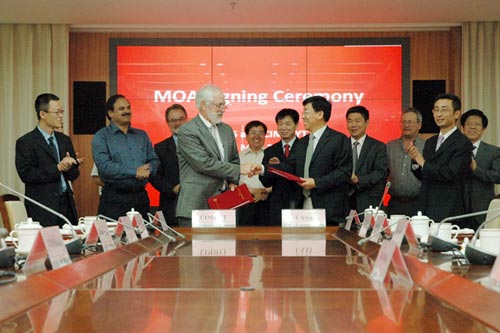 As indicated in Ren Wang’s speech, CIMMYT has the largest investment in China among CGIAR centers. Five collaborative research programs led by CIMMYT scientists stationed in China have been established at CAAS, Yunnan and Sichuan. This has created a new model for CGIAR-China collaboration and increased CIMMYT’s impact in China. CIMMYT is also the first international center to establish collaborative projects with the National Natural Science Foundation of China.
As indicated in Ren Wang’s speech, CIMMYT has the largest investment in China among CGIAR centers. Five collaborative research programs led by CIMMYT scientists stationed in China have been established at CAAS, Yunnan and Sichuan. This has created a new model for CGIAR-China collaboration and increased CIMMYT’s impact in China. CIMMYT is also the first international center to establish collaborative projects with the National Natural Science Foundation of China.
CIMMYT wheat germplasm has contributed significantly to wheat production in China. More than 90,000 wheat accessions were introduced to China and 14,000 genotypes were stored in national and provincial genebanks, accounting for around 55% of introduced wheat germplasm in China. More than 260 improved varieties were released from CIMMYT germplasm, and the accumulated planting area for these varieties has reached 45 million hectares.
More than 1,000 tropical inbred lines and populations from CIMMYT were introduced to China. CIMMYT germplasm has played a significant role in subtropical maize breeding in Yunnan, Guangxi, Guizhou, and Sichuan provinces. CIMMYT tropical maize germplasm has also been used as a donor for breeding temperate maize in northern China, as occurred in the two leading temperate hybrids Nongda 108 and Zhengdan 958.
CIMMYT-China collaborations have also had an impact on the application of molecular technology. Forty functional markers were developed, validated, and used in various wheat breeding programs, and three advanced lines developed from molecular markers are expected to be released in the next few years. These markers have been widely used to characterize Chinese and CIMMYT germplasm. A novel method for mapping quantitative trait genes, the ICIM, was developed and used in many countries. Breeding simulation tools are used to optimize the complicated breeding strategies. Nine training courses have been held in China, Mexico, IRRI, and Australia to promote new tools and methods. QTL analysis through joint linkage-LD mapping was developed and used to understand molecular mechanisms for drought tolerance. The genes related to the biosynthesis of proV A have been cloned and used to develop functional markers for molecular breeding. Chip-based and sequencing-based genotyping techniques have been used for genetic diversity analysis, haplotype map construction, and association mapping in maize. More than 400 papers have been published in peer-reviewed journals, including several papers in high-impact journals such as Genetics (2007), PNAS (2010), and Nature Genetics (2010, 2012).
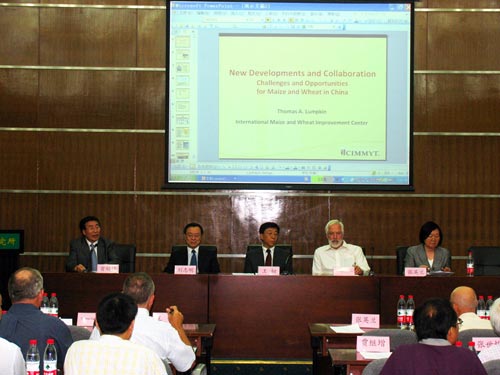 Bed planting has produced significant impact in the provinces of Gansu, Ningxia, Sichuan, Shandong, and Henan, bringing among other benefits a 30% reduction in input use. Bed planting is particularly advantageous at saving water. Conservation agriculture techniques combined with new winter wheat varieties have been broadly extended in traditional spring wheat areas, allowing farmers to take advantage of climate change to increase yields and reduce input use.
Bed planting has produced significant impact in the provinces of Gansu, Ningxia, Sichuan, Shandong, and Henan, bringing among other benefits a 30% reduction in input use. Bed planting is particularly advantageous at saving water. Conservation agriculture techniques combined with new winter wheat varieties have been broadly extended in traditional spring wheat areas, allowing farmers to take advantage of climate change to increase yields and reduce input use.
CIMMYT trained scientists play a leading role in China. Over 800 Chinese scientists and administrators have visited CIMMYT and more than 200 scientists have participated in various training courses or visiting scientist programs and more than 60 postgraduates were trained. Among them, more than 60 serve at a research professor level or became presidents of provincial academies or directors of research institutes. As of 2012, more than 20 training courses and international conferences have been jointly organized, with more than 3,500 participants.
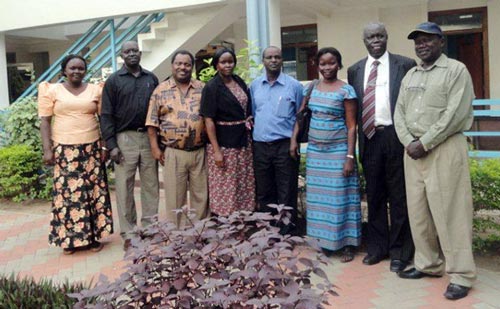 South Sudan, Africa’s newest country, is set to benefit from the project “Sustainable Intensification of Maize-Legume Cropping Systems in Eastern and Southern Africa” (
South Sudan, Africa’s newest country, is set to benefit from the project “Sustainable Intensification of Maize-Legume Cropping Systems in Eastern and Southern Africa” (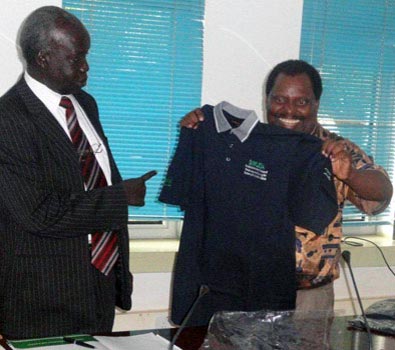 “ACIAR has availed initial funding for spillover activities,” said Mekuria. “The idea is to ensure that SIMLESA research results are quickly scaled out to countries like South Sudan and improve food security there.”
“ACIAR has availed initial funding for spillover activities,” said Mekuria. “The idea is to ensure that SIMLESA research results are quickly scaled out to countries like South Sudan and improve food security there.”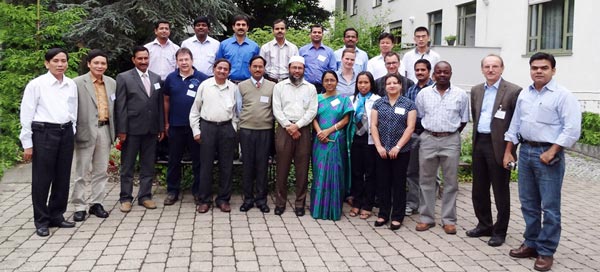
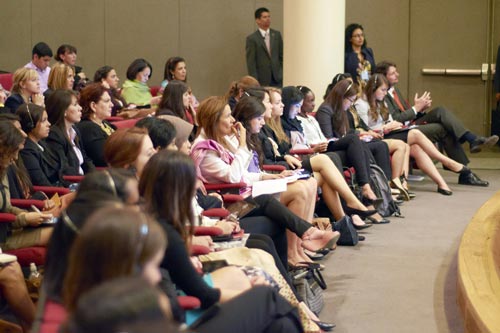 From 28 to 30 May, Mexico City held the G(irls) 20 Summit, a meeting in which 20 outstanding youths aged 18 to 20 represented each of the G20 countries, the African Union, and the European Union. This year, the priority issues for discussion and analysis were the role of women in agriculture and gender-based violence. CIMMYT was represented by Karen García, executive director of MasAgro, who shared some of her thoughts with the delegates on the role that science and technology can play in the development of rural women’s productive capacity.
From 28 to 30 May, Mexico City held the G(irls) 20 Summit, a meeting in which 20 outstanding youths aged 18 to 20 represented each of the G20 countries, the African Union, and the European Union. This year, the priority issues for discussion and analysis were the role of women in agriculture and gender-based violence. CIMMYT was represented by Karen García, executive director of MasAgro, who shared some of her thoughts with the delegates on the role that science and technology can play in the development of rural women’s productive capacity. One of the worst wheat diseases in China, stripe rust has appeared in yearly epidemics since 1950 and caused losses of more than 60 million tons. As China is among the world’s main producers of wheat, the CIMMYT China office in Chengdu, in collaboration with the Sichuan Academy of Agricultural Sciences (SAAS), organized a two-day workshop to address these issues.
One of the worst wheat diseases in China, stripe rust has appeared in yearly epidemics since 1950 and caused losses of more than 60 million tons. As China is among the world’s main producers of wheat, the CIMMYT China office in Chengdu, in collaboration with the Sichuan Academy of Agricultural Sciences (SAAS), organized a two-day workshop to address these issues.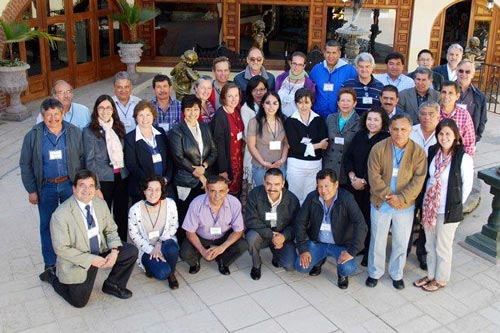 In order to define the research priorities for the Seeds of Discovery initiative in maize quality of landraces (a Strategic Initiative of both CRPs MAIZE and WHEAT funded by Mexico), a diverse group of food scientists, chemists, maize breeders, genebank curators, social scientists, and representatives of research institutions such as UNAM and Chapingo, met for a workshop to discuss future research on quality characteristics within native Mexican maize.
In order to define the research priorities for the Seeds of Discovery initiative in maize quality of landraces (a Strategic Initiative of both CRPs MAIZE and WHEAT funded by Mexico), a diverse group of food scientists, chemists, maize breeders, genebank curators, social scientists, and representatives of research institutions such as UNAM and Chapingo, met for a workshop to discuss future research on quality characteristics within native Mexican maize.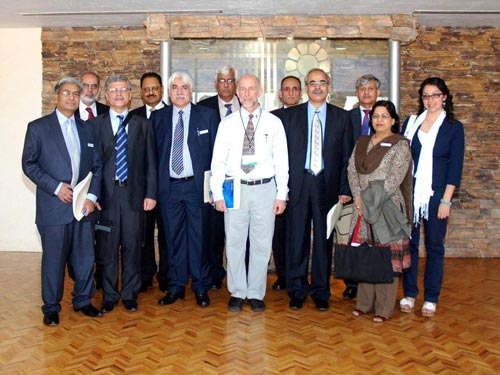 The strength and breadth of the fruitful five-decade partnership between Pakistan and CIMMYT have grown significantly in recent years: this was one conclusion from the visit to CIMMYT on 29 May 2012 of a 12-member team of senior civil servants, ambassadors, and corporate executives from Pakistan.
The strength and breadth of the fruitful five-decade partnership between Pakistan and CIMMYT have grown significantly in recent years: this was one conclusion from the visit to CIMMYT on 29 May 2012 of a 12-member team of senior civil servants, ambassadors, and corporate executives from Pakistan.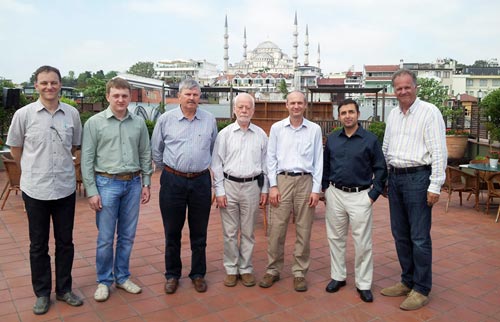 GRIS (
GRIS ( Have you ever wondered why the papers you have written on a piece of innovative research are rejected by your target peer-reviewed journals, or why your colleagues in similar projects are publishing with less difficulty? It could be that you are not writing in a style that is acceptable by the journals. For this reason Insect Resistant Maize for Africa (IRMA) and its sister project Water Efficient Maize for Africa (WEMA) have been conducting annual scientific writing workshops for their project scientists and students based in Nairobi. This year’s IRMA/WEMA Writing Workshop, which was attended by 15 participants, was held in Nakuru, Kenya during 07–11 May 2012.
Have you ever wondered why the papers you have written on a piece of innovative research are rejected by your target peer-reviewed journals, or why your colleagues in similar projects are publishing with less difficulty? It could be that you are not writing in a style that is acceptable by the journals. For this reason Insect Resistant Maize for Africa (IRMA) and its sister project Water Efficient Maize for Africa (WEMA) have been conducting annual scientific writing workshops for their project scientists and students based in Nairobi. This year’s IRMA/WEMA Writing Workshop, which was attended by 15 participants, was held in Nakuru, Kenya during 07–11 May 2012.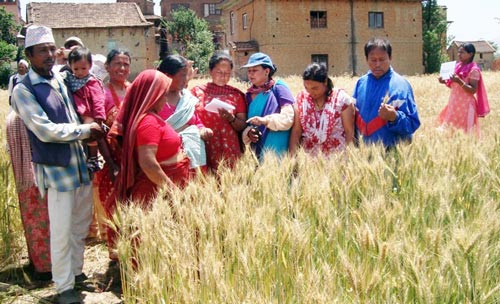 On 14 May 2012, at Tikathali, Changathali Village Development Committee Centre (VDC) in Lalitpur, around 30 participants from MoA, NARC, seed companies, and CIMMYT were joined by 61 farmers (43 female, 18 male) and several graduate students and technicians. The event also saw active participation from senior district agriculture development officers from Lalitpur, Bhaktapur, and Kathmandu as well as the Crop Development Directorate of Nepal and the Seed Quality Control Center.
On 14 May 2012, at Tikathali, Changathali Village Development Committee Centre (VDC) in Lalitpur, around 30 participants from MoA, NARC, seed companies, and CIMMYT were joined by 61 farmers (43 female, 18 male) and several graduate students and technicians. The event also saw active participation from senior district agriculture development officers from Lalitpur, Bhaktapur, and Kathmandu as well as the Crop Development Directorate of Nepal and the Seed Quality Control Center.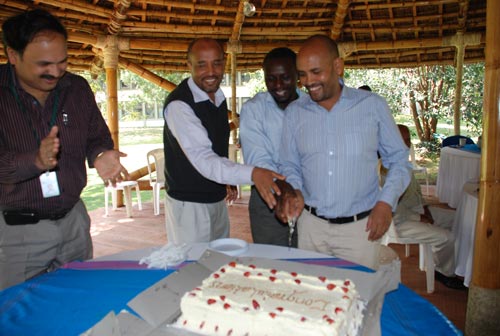 To share the good news, the Socioeconomics program hosted a get-together with the team in Nairobi, Kenya. During the cake cutting ceremony, the best gender paper award was dedicated to women farmers from Embu and Kakamega in Kenya’s Eastern and Western Provinces, where the data was collected. The Nairobi team also took the opportunity to initiate monthly seminars in order to share research findings hosted by the Global Maize Program and the Socioeconomics program and promote regular interaction among the team. The program directors, Bekele Shiferaw and B. M. Prasanna nominated Dan Makumbi, Hugo De Groote, Sika Gbegbelegbe, Fred Kanampiu, and Sarah Kibera, to form the organizing committee for the seminars.
To share the good news, the Socioeconomics program hosted a get-together with the team in Nairobi, Kenya. During the cake cutting ceremony, the best gender paper award was dedicated to women farmers from Embu and Kakamega in Kenya’s Eastern and Western Provinces, where the data was collected. The Nairobi team also took the opportunity to initiate monthly seminars in order to share research findings hosted by the Global Maize Program and the Socioeconomics program and promote regular interaction among the team. The program directors, Bekele Shiferaw and B. M. Prasanna nominated Dan Makumbi, Hugo De Groote, Sika Gbegbelegbe, Fred Kanampiu, and Sarah Kibera, to form the organizing committee for the seminars.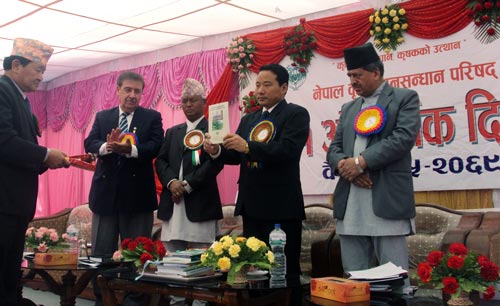 The gathering brought together more than 275 scientists and development workers. “The Nepal Government is planning to raise the budget for agriculture significantly in the upcoming national budget plan” said Pun. “There is also a need to adopt enhanced technology to double agricultural production and to attract youth to the sector,” he added. Pun also mentioned that “the Prime Minister and his Government are committed to giving top priority to farming as it is the only way to alleviate poverty and ensure employment for a larger section of society”.
The gathering brought together more than 275 scientists and development workers. “The Nepal Government is planning to raise the budget for agriculture significantly in the upcoming national budget plan” said Pun. “There is also a need to adopt enhanced technology to double agricultural production and to attract youth to the sector,” he added. Pun also mentioned that “the Prime Minister and his Government are committed to giving top priority to farming as it is the only way to alleviate poverty and ensure employment for a larger section of society”.
